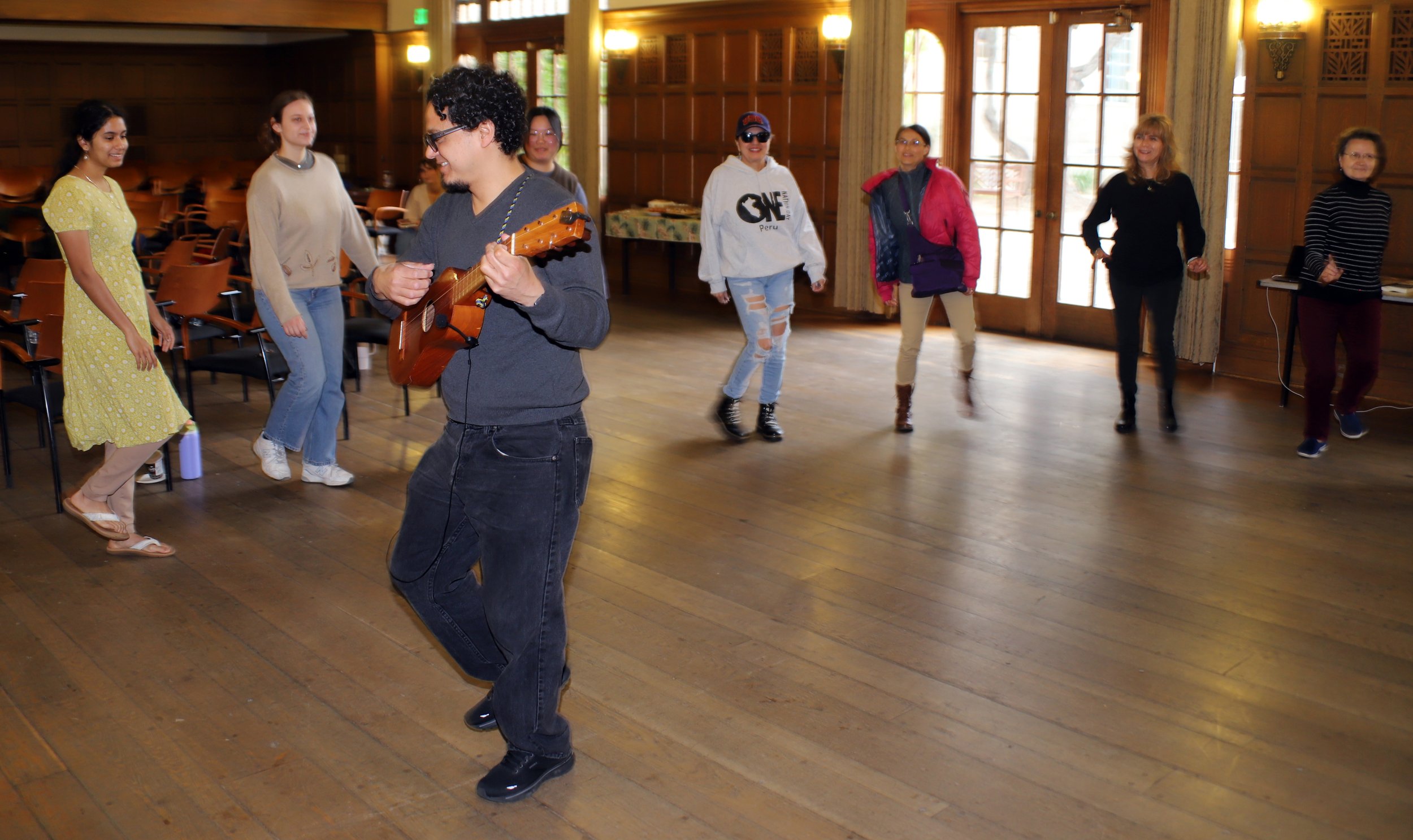Connecting to Neuroscience Through Dance
At a recent NeuroDance workshop, participants explore the links between neuroscience and movement while trying new dance steps to a variety of musical rhythms.
by Marilyn Perkins
Neuroscientist Jessleen Kanwal explores how beetles use their senses to decode the world. Her work as a postdoctoral scholar research associate in the laboratory of Joe Parker, assistant professor of biology and biological engineering and Chen Scholar, helps to unravel how animal brains integrate sensory signals and how that integration drives their behavior.
Outside of the lab, Kanwal performs bhangra, an energetic Punjabi folk dance she has practiced since high school. It wasn’t long before she noticed the parallels between the science of both animal and human motion.
“We study animal behavior by breaking it down into small components called behavioral syllables. Then, we try to figure out how sensory cues alter when and how an animal chooses to perform these syllables,” Kanwal says. “I find this is similar to what happens in dance, which is also a sequence of syllables or body movements. External factors, like music, or internal ones, like our emotions, can alter the intensity, timing, and order of the syllables that we choose to express.”
Now she has found an opportunity to invite others to explore this intersection of neuroscience and dance. Kanwal designed and taught a new course during the 2024 winter term at Caltech on the topic and recently led a “NeuroDance” workshop on campus with funding she received from a 2023 L'Oréal USA For Women in Science fellowship. She co-organized the workshop with Alison De La Cruz and Xochi Flores of the local multicultural performing arts organization Great Leap.
Neuroscientist Jessleen Kanwal explains how different parts of the brain activate when a person moves to a musical rythym.
The workshop introduced participants to the concept of sensorimotor coupling, a process in which the sensory and movement systems of the brain work in tandem to, for example, help a dancer move to a musical beat. During the workshop, Kanwal explained how the brain works to process auditory signals in the sensory cortex and extract key features like rhythm. The motor cortex then transforms the rhythm inputs into signals that tell muscles to contract.
Drawing from psychology, Kanwal also made the case for dance as a form of prosocial behavior. She described a study examining two different groups, one of which learned a dance in synchrony, and the other in which participants danced individually. The study found that the group that danced the same moves together felt more trust towards each other and more social closeness.
“Exploring the neural basis of dance has a lot of potential to help us understand more about how the brain communicates with the rest of the body to enable social interactions, empathy, and motor-skill learning and coordination,” says Kanwal.
To explore the links between neuroscience and dance in action, Flores led a traditional Mexican fandango circle dance inspired by the macaw parrot. Wearing yellow wood-soled shoes, she stomped and shuffled on a raised platform, her footsteps resounding to the rhythm of a guitar melody. As the music flowed, the participants learned increasingly complex steps, clapping to the beat and waving their arms to imitate the movements of the birds.
The dance tested the agility of their sensorimotor systems, connected the dancers to nature, and set the group into a socially connected flow state, Kanwal says. When the dance ended, the leaders asked participants to share a word to describe their feelings; the question drew shouted replies like “energized!” and “ecstatic!”
Kanwal says the workshop was the first in a series of NeuroDance workshops, which she hopes to expand to local middle and high schools, with a focus on outreach to get more young women interested in STEM.
“There are a lot of scientists and artists eager to learn from each other, but few opportunities to come together and form deep collaborations,” Kanwal says. “I'm excited to build some of those bridges, because I think the fusion of science and art leads to incredibly creative and impactful outcomes for society.”


